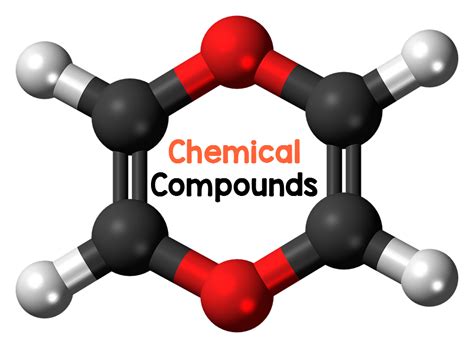What’s the most efficient workout for sustained peak male strength & energy?

For men aiming to not only build but also sustain peak strength and energy, the pursuit of an efficient workout routine is paramount. It’s not just about lifting heavy; it’s about intelligent training, recovery, and lifestyle choices that create a synergistic effect, enabling consistent high performance without burnout. The most efficient approach integrates foundational principles that maximize gains while minimizing wasted effort.
The Core Pillars of Sustained Peak Performance
Achieving and maintaining superior strength and energy levels hinges on a few non-negotiable principles that form the bedrock of any successful regimen.
1. Compound Movements are King
The most efficient workouts prioritize compound exercises. These movements engage multiple joints and muscle groups simultaneously, leading to greater strength gains, increased caloric expenditure, and a more robust hormonal response. Think squats, deadlifts, bench presses, overhead presses, and rows. These exercises mimic natural movement patterns and build functional strength that translates directly into everyday life and other athletic endeavors.

2. Progressive Overload: The Engine of Growth
Without continually challenging your muscles, adaptation stagnates. Progressive overload is the gradual increase of stress placed upon the body during exercise. This can be achieved by increasing weight, reps, sets, decreasing rest time, improving form, or increasing training frequency. Consistently applying progressive overload forces your body to adapt, leading to continuous improvements in strength and muscle mass. Documenting your workouts is crucial for tracking progress and ensuring you’re always striving for more.
3. Intensity and Periodization
While progressive overload is key, constant maximal intensity can lead to overtraining. An efficient program incorporates periodization – systematically varying training load and intensity over time. This includes cycles of higher intensity/lower volume and lower intensity/higher volume, as well as deload weeks to facilitate recovery and prevent plateaus. This strategic cycling allows for sustained progress and reduces the risk of injury and burnout.
Optimizing Your Training Protocol
When it comes to structuring your workouts, an efficient approach often leans towards full-body routines or intelligently designed upper/lower splits for most individuals.
Full-Body Workouts vs. Split Routines
For many, 3-4 full-body workouts per week can be highly efficient. This allows for frequent stimulation of major muscle groups, promoting greater protein synthesis and strength adaptations. Alternatively, an upper/lower split (e.g., 2 upper, 2 lower days) provides adequate frequency while allowing more volume per muscle group. The key is to ensure sufficient recovery between sessions for each muscle group.

Minimal Effective Dose
Efficiency also means focusing on the ‘minimal effective dose.’ This principle suggests finding the least amount of training volume and frequency required to elicit desired results. More isn’t always better; often, quality over quantity prevents overtraining, conserves energy, and allows for better recovery – all crucial for sustained peak performance.
Beyond the Lifts: The Energy Equation
No workout, however efficient, can sustain peak strength and energy in isolation. Lifestyle factors play an equally critical role.
1. Prioritize Recovery and Sleep
Muscle growth and energy restoration happen outside the gym. Aim for 7-9 hours of quality sleep per night. During deep sleep, growth hormone is released, and your body repairs and rebuilds. Neglecting sleep is a surefire way to compromise strength, energy levels, and overall health.

2. Fuel for Performance: Nutrition
A balanced, nutrient-dense diet is non-negotiable. Adequate protein intake (around 1.6-2.2g per kg of body weight) is essential for muscle repair and growth. Complex carbohydrates provide sustained energy, while healthy fats support hormone production and overall well-being. Hydration is also critical for all bodily functions, including energy levels and exercise performance.
3. Stress Management
Chronic stress elevates cortisol, a hormone that can break down muscle tissue and suppress testosterone, directly impacting strength and energy. Incorporate stress-reducing activities like meditation, yoga, spending time in nature, or engaging in hobbies.

A Sample Efficient Workout Framework
While specifics vary per individual, an efficient framework might look like this (3x/week full-body example):
- Day 1: Lower Body Focus – Squats, Romanian Deadlifts, Lunges, Calf Raises.
- Day 2: Upper Body Focus – Bench Press, Barbell Rows, Overhead Press, Pull-ups/Lat Pulldowns.
- Day 3: Full Body Compound – Deadlifts, Dips, Inverted Rows, Farmer’s Walks.
Each session would include 2-3 compound movements, followed by 1-2 accessory exercises, performed for 3-5 sets of 5-10 repetitions, focusing on progressive overload. Incorporate a thorough warm-up and cool-down.

Conclusion
The most efficient workout for sustained peak male strength and energy isn’t a secret formula but rather a holistic approach. It combines intelligent, progressively overloaded compound training with meticulous attention to recovery, nutrition, and lifestyle. By mastering these pillars, men can unlock and maintain their physical potential, enjoying robust strength and unwavering energy for years to come. Consistency, patience, and listening to your body remain your most powerful tools on this journey.









